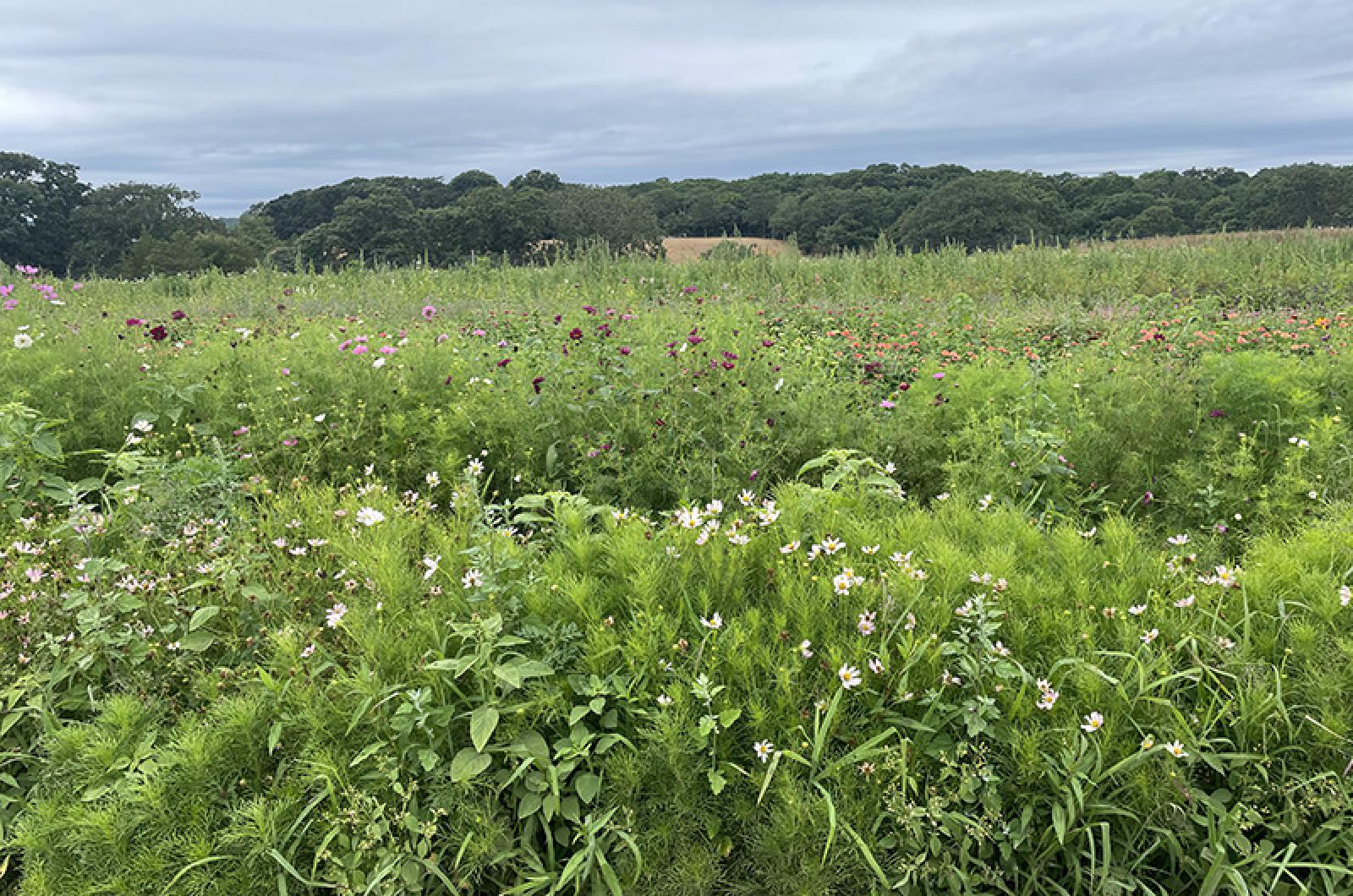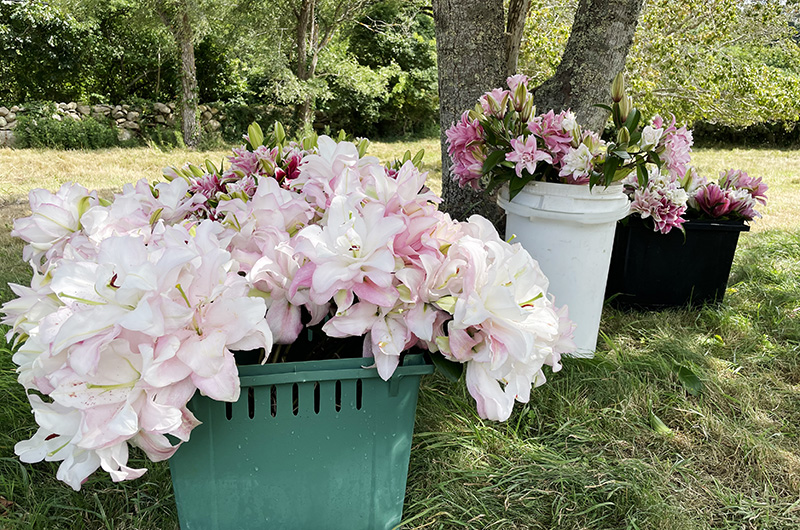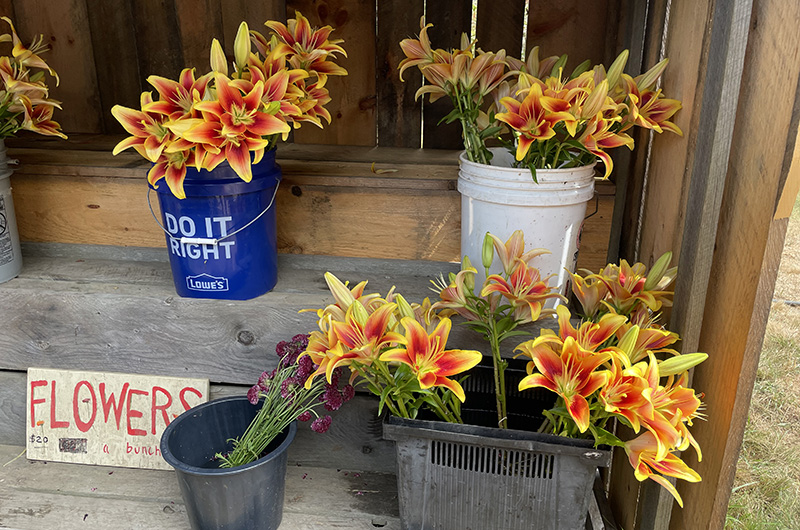I’ve always maintained a stubborn distance from flower farming. Vegetables, fruit, meat, dairy — these are what serious farmers concern themselves with. Floriculture seemed like little more than well-organized gardening, a semi-decadent diversion from land put to good use. This attitude probably has its roots in some deep-seated insecurities, but this is not the proper forum to excavate my unconscious — you are here to read about farming.
Regardless of my own psychoses, I think this is a relatively common attitude among vegetable gardeners.
“I always used to talk down about flowers,” said Lily Walter, Slip Away Farm owner, former Farm and Field column writer, and recent dabbler in floriculture.
Under the direction of flower manager Anna Swanson, Slip Away Farm is putting out consistently show-stopping bouquets for this year’s flower CSA, with yellow lilies bigger than my head (though I must admit, Tea Lane Farm’s double lilies might have them beat).
“Flowers are easier to grow than veggies,” Mrs. Walter told me. “Once they are in the ground, they go all season long and it’s a repeat harvest. It’s a nice way to boost the farm’s bottom line.”
Flowers, she said, are a good way to maximize their arable land and reduce tillage. Pest pressure is also lower, save for the stray slug or earwig, and birds aren’t typically an issue, though the drought has pushed some of them to peck holes in the irrigation. But does all this eminent agricultural practicality hide a deeper darkness?
The biological economy of floriculture is a comedy of errors. The need to titillate insects into pollination (with the ultimate goal of reproduction) has driven the evolution of these stunningly beautiful organisms. Then humans come along, with all the vulgar aesthetic sense of the bumblebee and none of the tact, to chop down the flower at its peak and try to own its beauty, all the while arresting the reproductive process for which it developed such beauty.
I went on a trip on Monday to meet with Morning Glory Flower Manager Robyn Athearn, in order to be disabused of my misanthropic outlook. She has a much more positive take on the process.
“Flowers are this thing you gift to people, that you can bring to a funeral or a birthday meal,” she said. “It gives my life meaning to move this beauty all over the Island.”
The aura of the Morning Glory flower fields is completely magical, so much more pleasant than the purely functional cornfields I visited last week. Dozens of monarchs flitted about the zinnias and echinacea, among many other flowers that my untrained eye couldn’t identify, stretching out to into a vista of oak forest. Very pretty.
Of course, the floriculturist is not immune to the time stressors of any other farmer.
“It’s a like a stadium wave” said Ms. Athearn, of the constantly shifting demands of the harvest. “On a good day, your heart is bursting with joy, but on a bad day you feel completely clamped down by stress.”
It might seem like a lot for a crop that you cannot even eat, but I supposed that all depends on your priorities.
Growing flowers, Mrs. Athearn said, is about making time for beauty, about spreading love. Maybe a little frivolity isn’t so bad.









Comments
Comment policy »